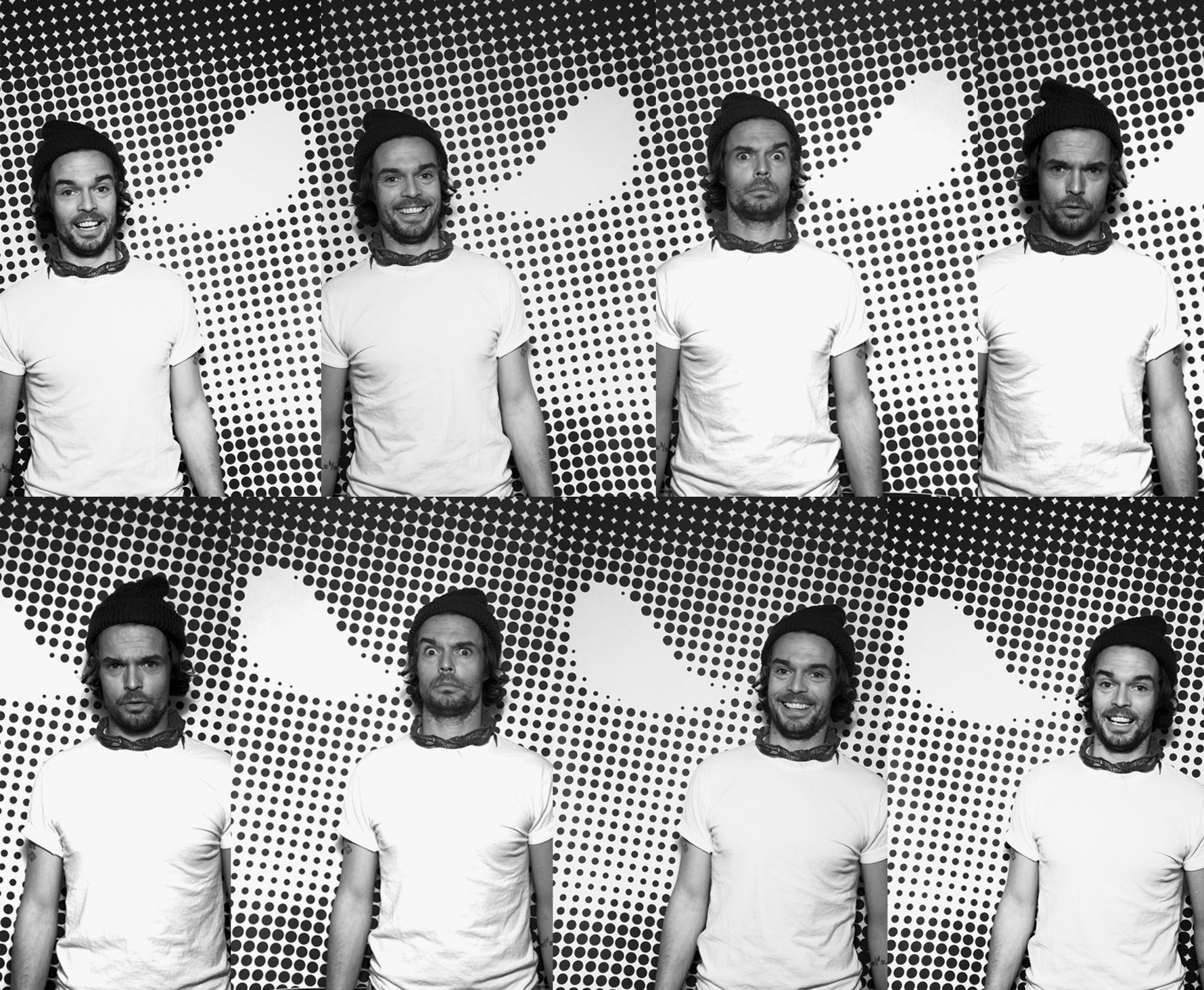
- Interview by Tina Essmaker March 26, 2013
- Photo by JR
Oliver Jeffers
- artist
- illustrator
- writer
Oliver Jeffers is an artist who was born in Australia, brought up in Northern Ireland, and now lives in Brooklyn, New York. His paintings have been exhibited worldwide, and his picture books, published by HarperCollins UK and Penguin USA, are now translated into over 30 languages. His second book, Lost and Found, was developed into an animated short film, which received over 60 awards, including a BAFTA for Best Animated Short Film.
Interview
Describe your path to becoming an artist, illustrator, and writer.
I’ve always liked drawing pictures and although I remember not being very good at it when I was growing up, I still enjoyed it very much. The reason I wasn’t very good for a long time was because after discovering I loved drawing, I fell into the trap of trying to copy other people. Everything changed when I learned to stop doing that and listen to the way my hands wanted to draw and paint.
When I went to college, I chose to earn a degree in visual communication because I wasn’t sure what I was going to do after school. I was mostly interested in becoming a fine artist and a lot of the fine art I was making was a combination of words and pictures that created narratives on canvas. Then, by accident, I discovered picture books. That neatly fed into my interest in putting words and pictures together and was a much more interesting environment for this exploration to play out in. Without realizing it, I started branching out in a different direction with my art. My interest in putting words and pictures together was totally satisfied by picture books, so I started asking questions, using numbers, and drifting toward math and science—two subjects that, ironically, I never paid much attention to in school.
I’ve always wanted to be an artist. I grew up in Northern Ireland and went to a school that was kind of rough. It was a new school and was one of the first that integrated Catholics and Protestants in Belfast. To get their attendance numbers up and get funded, the school had to take kids who were being kicked out of other schools. Because of that, many of the students did not have an academic bent; those of us who did had to pretend we didn’t like learning and that we didn’t actually do our homework. I caught a lucky break because I was able to talk my way out of trouble and when the other kids found out I could draw well, I was asked to draw on the bottom of skateboards and on school bags. My peers never gave me a hard time for my interest in art because of this and the teachers were supportive because I was actually interested in something.
The path to art school was pretty straightforward from there. When I got to art college, I decided that I needed to earn a degree with a transferable skill set so I would be able to get a job, but the first thing I did when I left college was decide that I was never ever going to have a job. (laughing) I took a year off in between my third and final year of college and six months into it, I came up with a project. It started as sketches that were going to become paintings, but it ended up being my first picture book and at that point, I made the jump. As I already mentioned, a lot of my work had been about words and pictures coming together to create a narrative. Then, when I discovered picture books as a platform, I realized that my curiosity for how those two disciplines could interact was totally satisfied and I felt at home in that realm.
So you went to school in Ireland and started your career there?
Yes, I only moved to New York five years ago. I grew up in Belfast and went to school and art college there.
Did you go straight into freelancing after college?
Yes. I did commercial illustration for a long time, which paid my bills when I was first starting to sell paintings. I also continued illustrating when I first started doing picture books because people don’t buy as many copies of picture books as they do of, say, the Harry Potter books. It took a long time before I was making enough to earn a living from picture books or painting, so I continued to work as a commercial illustrator for a few years, which I still dabble in from time to time when an interesting enough job finds me—it’s actually good practice to sharpen the mental visual problem-solving faculties. I got my first commission on the final day of college and that was enough for me to buy time to put my book idea together and send it to publishers. I juggled those three things for a few years—illustration, painting, and picture books—and whenever one wasn’t providing, another one was. I was fortunate in that I didn’t have to earn my living by doing something that did not relate to image-making.
I continued to live in Belfast, but traveled to London once a month because my publisher was based there. Then I started visiting New York and had an exhibition here about 12 years ago. Every time I was in New York, it felt like I shouldn’t be leaving. About seven years ago, I decided I wanted to base my studio out of New York and two years after that, I got my visa and moved over here.
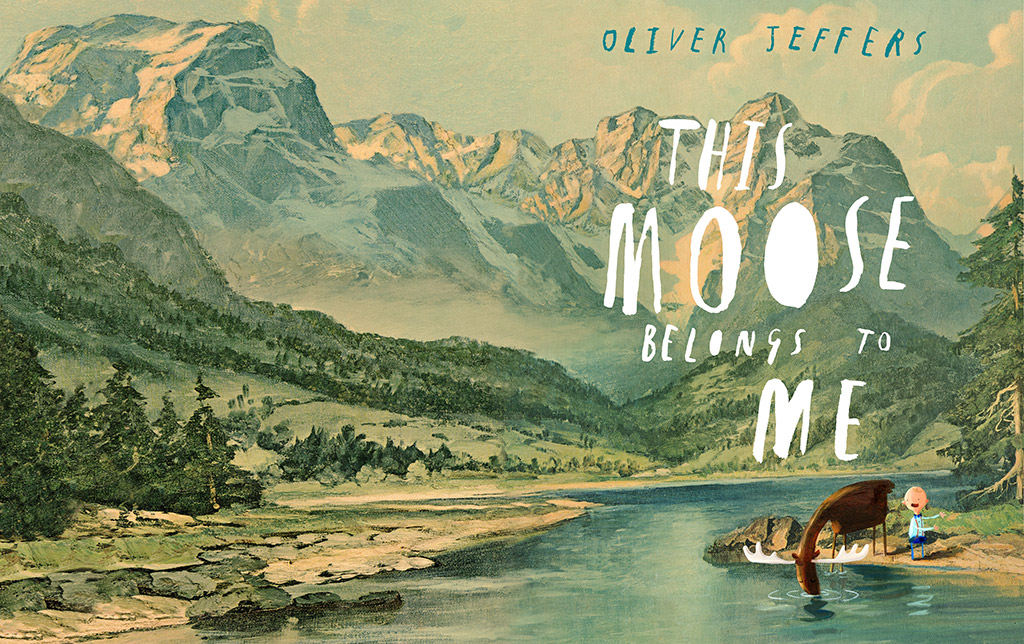
“Balancing integrity versus income is tricky; when I make decisions, sometimes I know that I might not be as well off the next year, but I’ll certainly be making the best work.”
Was creativity part of your childhood in Belfast?
Definitely. Belfast is a very creative place. It was kind of in a bubble for years, which I think was good and bad. It was bad in that it was repressive, aggressive, and small-minded for many; but it was good because those who were more worldly were forced to be more so and also the city wasn’t making the same mistakes that the rest of Ireland was during the 80s and 90s.
At the start of the 1990s, after the Celtic Tiger kicked in, Ireland became interested in showing the world that it was on par with the rest of Western Europe regarding development, so a lot of new buildings and developments were built, but because of that, Ireland arguably changed too quickly and got rid of a lot of the culture that was its backbone. Northern Ireland avoided that as people refused to go there because of the violence. It didn’t have the same financial investment from Europe and the US, so it had been growing more slowly and, as a result, retained a lot of its authenticity.
Culturally, there is a lot of creativity and a lot of great music and writing that comes out of Belfast: C.S. Lewis, Seamus Heaney, and Van Morrison to name a few. My interest in duality as a continuing theme in my art is definitely born from the contradictions inherent in being Northern Irish. There is also a fairly unique sense of humor that is particular to Northern Ireland—a darkness that underpins everything, where nothing is sacred and everything can be laughed at. In hindsight, that has been a huge element in almost everything I’ve ever done.
My family is also creative, especially my mum’s side, who always placed a huge importance on creativity. I certainly felt nurtured because of that.
Did you have an “aha” moment when you knew what you wanted to do for a career?
Sort of. I was quite young when I realized you could make a living from drawing pictures. I discovered that and thought, “Really? Yeah, I’ll do that. That’s much better than going to work for the civil service.”
Do you remember how you learned that?
Not quite, but I have this vague memory of someone telling me that if you move to America, it’s quite easy to get a job animating for The Simpsons and that seemed so glamorous at the time.
(both laughing)
That’s great. Was there a point in your life when you decided you had to take a big risk to move forward?
Yeah, that’s happened a few times. Balancing integrity versus income is tricky; when I make decisions, sometimes I know that I might not be as well off the next year, but I’ll certainly be making the best work. I figured out early on that there are certain things I don’t want to do when it comes to how I’m perceived. I try to stay away from advertising, even though that’s where the big money is. In the visual arts, you are often only as good as your reputation and associations, so you have to think ahead and be smart. As far as commercial commissions, I’m not just a gun for hire; I actually have something I’m trying to accomplish and a way of making work that I want to continue and be known for. Although some lucrative offers came in for illustration work, I realized that taking them would be shortsighted and could possibly stunt other aspects of my practice.
Do you think that moving to New York was a big risk for you?
I suppose it was. I figured out how much I would actually need to pay rent for an apartment and studio in New York and thought, “Well, I gotta figure out a way to do this.” I just went for it. It was one of those things where I knew it would be a big risk, but I was pretty convinced it would pay off. I also knew that if I wanted it bad enough, it would happen.
“It’s at the back of many people’s minds—that there’s something bigger going on—but if you try to make work that other people want to see and read, then you start catering to public opinion and the art you make suffers.”
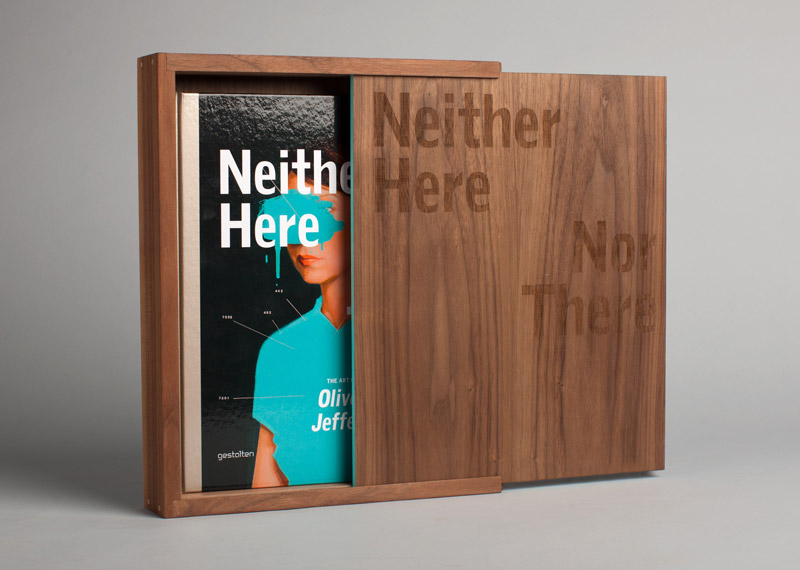
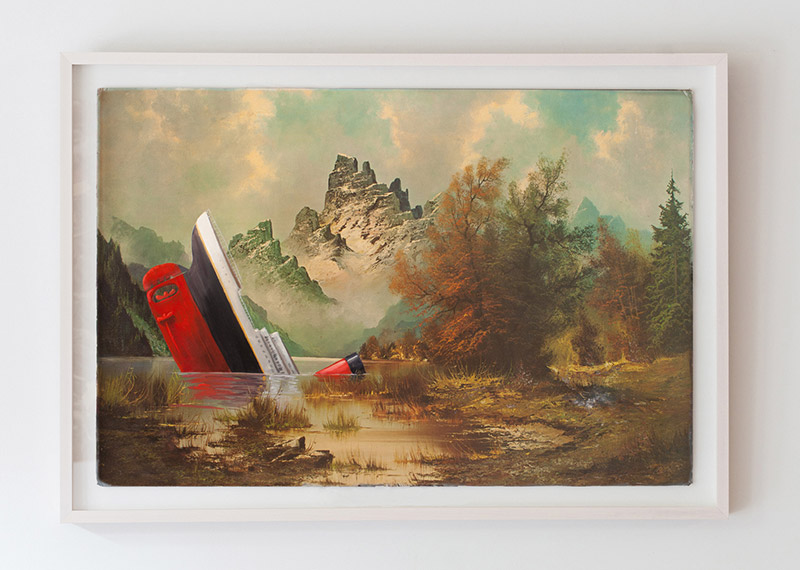
Have you had any mentors along the way?
Yeah, I’ve had a whole bunch of people. During my first year of art college, I was lucky to have a teacher named Dennis McBride, who was in his last year there. He encouraged me to make work for myself rather than trying to make what I thought other people wanted to see. That’s been huge. Also, another teacher named Mike Catto inspired my love of design and typography.
In publishing, I’ve had a few people who have really looked out for me and shown me the ropes. A gentleman who became my agent, Eddie Bell, who used to run HarperCollins, showed me the pitfalls and mistakes to avoid when dealing with being a public persona.
When I moved to New York, Mac Premo, a NY-based artist who I’ve worked with for years and have been friends with for longer, became a very positive influence in terms of showing me the attitude you need to adopt to be an artist living in New York City. And I continue to meet people all the time who influence me, not necessarily in the way they work, but in the way they carry themselves. I’ve recently become friends with the artist JR and watching the way that he works and networks has been hugely influential. I also recently had the opportunity to meet with Eric Carle, who contacted me, took me under his wing, and offered me any advice that might help with my publishing career.
That’s amazing. Are your family and friends supportive of what you do?
Oh, yeah, and they always have been. I was lucky that my mum and dad never pushed me to go down the road of getting a proper job, like being a lawyer or a doctor. They were incredibly supportive and so are my friends. A lot of the friends I have now are of a similar ilk where they just decided what they wanted to do and did it, whether or not it was regarded as a proper job or if success was not guaranteed.
Do you feel a responsibility to contribute to something bigger than yourself?
Yes, I do, but I try not to think about it too much. That’s the funny balance. It’s at the back of many people’s minds—that there’s something bigger going on—but if you try to make work that other people want to see and read, then you start catering to public opinion and the art you make suffers. It’s a balance between being aware that you’re part of something bigger than yourself, but also making work that’s personal and not caring what people think. Again, that goes back to the lesson that Dennis McBride taught me when I was 18.
Are you satisfied creatively?
Not quite. I think that the second that I am, I’ll be concerned. There’s nothing I’ve done that I think is perfect. I always say, “You know, I could have done that a little better.” I’m always curious and constantly think about the next thing. I have a short attention span and am a little bit restless. I’ve never been fully satisfied.
I also don’t have a formula for anything I do, so I’m making things up on the spot all the time, which encourages further creative thinking. The whole thing is a game. I’m having fun. More than fun, I’m having the time of my life. If I stop having fun, then it’ll mean I’m bored and starting to rely on formulas.
That said, is there anything you see yourself doing or exploring in the next 5 to 10 years?
I have all kinds of different things planned. I have a blackboard with a big list of things I want to do and if I get them all done in five years, I’ll be doing well.
I have a few ideas for taking the maps on wood that I do and making something more 3-dimensional. I’m talking with a gallery about possibly having a show of just those and I’m speaking to a carpenter about making giant globes of the earth out of wood. Dealing with a project of that kind of enormity is something I’ve never done.
I also want to make more of the dipped paintings I’ve been doing where I make a completed figurative portrait then dip it almost entirely into a vat of paint, obscuring it forever. I’ve already experimented with making two and it was such a technical pain in the ass—we ended up needing 16 gallons of paint to fill the custom made vat and then the bag ripped trying to put the unused paint back in the cans. It was a real mess! I need to figure out a better system for this because I want to have a show with dozens of them, all in different colors. To do that, I’ll need to get really smart and almost think like an engineer about it.
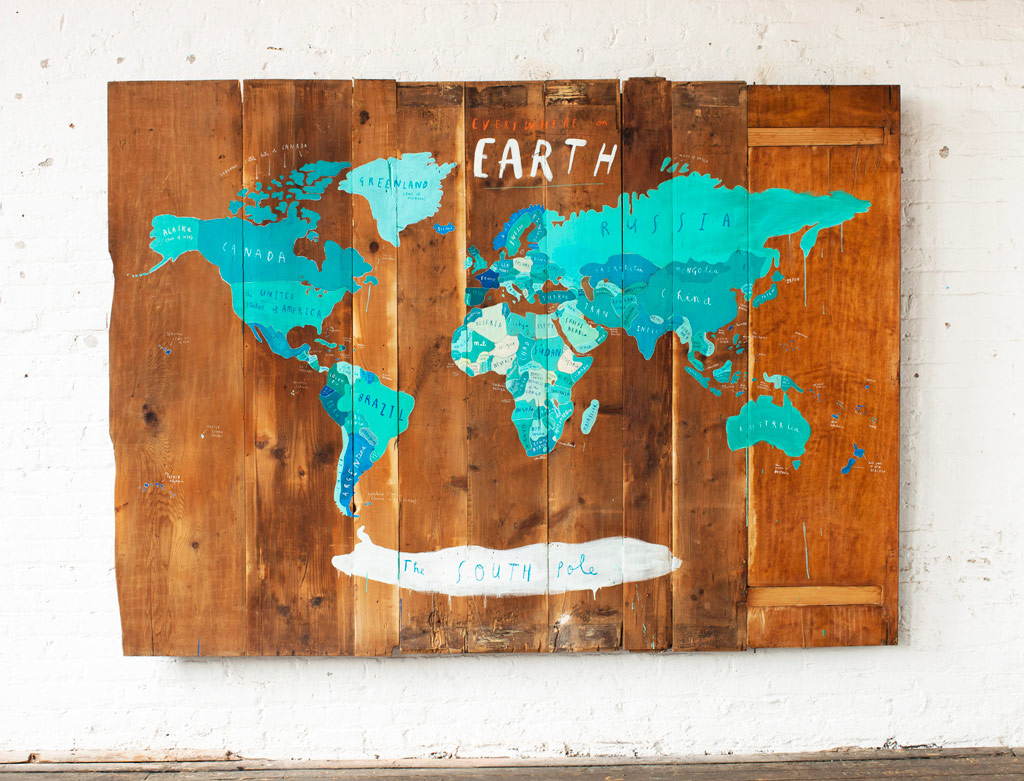
“I’m always curious and constantly think about the next thing. I have a short attention span and am a little bit restless. I’ve never been fully satisfied.”
If you could give one piece of advice to a young artist starting out, what would you say?
Be disciplined. Work hard. Be prepared to hear “no” a lot and don’t care. My dad taught me an important lesson, which is to look at why someone does something rather than what they actually do. A lot of artists are making art because they they want to be cool and they want people to like them. That’s the wrong reason to be making art. Starting out, you will encounter a lot of people who don’t really care what you do, but that shouldn’t be the motivation—again, the lesson I was taught by Dennis McBride. Be prepared to have a lot of people not enjoy your work and have it not bother you; you should do it because you want to do it.
How does living in New York impact your creativity?
I think there’s something unique about New York because people want to be here. It’s not that way in some of the other big cities. For example, there are a lot of bitter people floating around in London because, in a sense, I think they can sometimes end up stuck there. That doesn’t really happen in New York as it doesn’t have the same history that London does and because people really have to choose to be here. As a result, New York is filled with positive thinking and people who want to accomplish something, which becomes the fabric of the city and creates an energy that’s palpable. It’s hard to turn off here, so sometimes I just need to leave to relax. The people I’ve met, the experiences I’ve had, the aspects of the city—that all gets absorbed in some way. This is my favorite place on the earth and I can’t imagine making art anywhere else right now. I need it all in my life: the conversations, the people, and the really bizarre things I hear and see. And I don’t think there is a better social or culinary scene in the world.
This question goes along with that. Is it important to you to be part of a creative community of people and do you have that?
Yes, I do have that and I think it’s hugely important. No one makes art in a bubble. Being able to feed off of and bounce ideas off of each other is imperative. One of the things I’ve learned that is massively important is the idea of how your work can be misinterpreted. Hearing your ideas repeated back to you by someone you trust is a huge part of the creative process. They might get it wrong, but in hearing it back, you might see your idea more clearly, or it might morph into something else. You don’t get that when working on your own.
The ability to collaborate is also huge. Two years ago, I moved into a building with two dozen artists and it’s been one of the best decisions I’ve made. I’ve met so many great and interesting people and have been able to collaborate on things with people I never would have imagined working with. It’s become a very important part of what I’m doing. So, yeah, the community aspect is massively important. I remember hearing that successful and driven people surround themselves with equally successful and driven people. I realize I’ve done that.
What does a typical day look like for you?
There’s no such thing, really. It depends on what I’m working on. I try to get to the studio as early as I can to deal with emails, organizational things, and correspondence with my publishers in London. Then I try to do creative work in the afternoon. If there’s a big project going on, I’ll just stay in and work. If not, I like to get out on the street and experience life.
I’m lucky because my wife works with me and so does a friend from college. At least once a week we sit down and have a chat about what needs to be done and then, we divide and conquer. That forces me to take a practical look at where I’m going.
Of course, all of that is when I’m not traveling. I do tend to spend a lot of time on airplanes and in hotels these days.
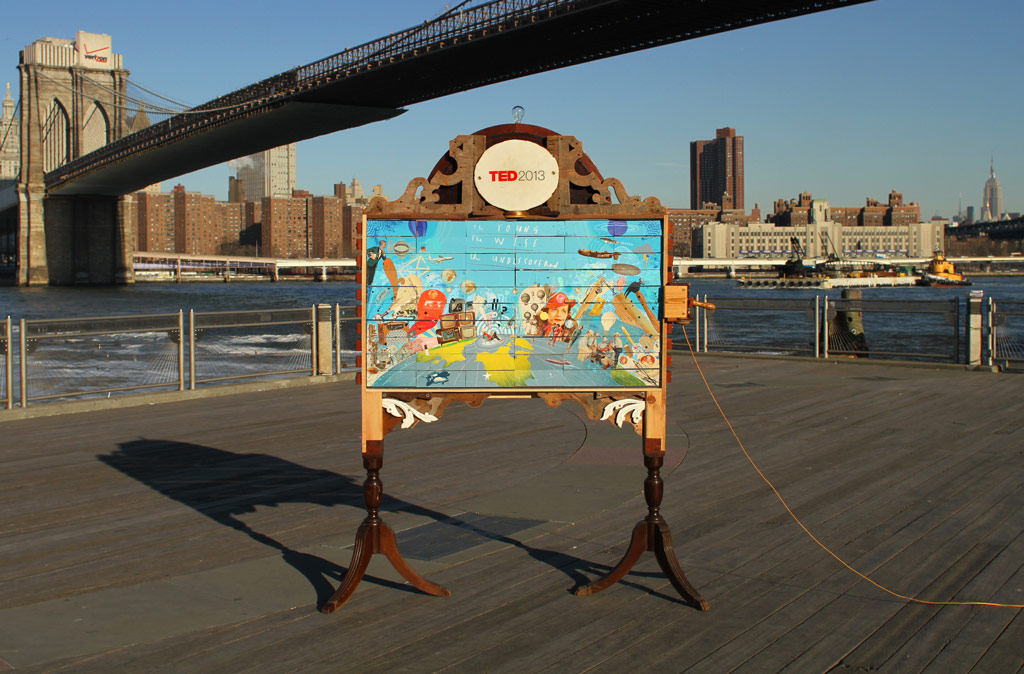
“…New York is filled with positive thinking and people who want to accomplish something, which becomes the fabric of the city and creates an energy that’s palpable.”
What music are you listening to right now?
My music tastes are extremely eclectic, but I’ve actually been listening to Bach a lot in the last week or so. I have a friend, Chris Thile, who is a very talented musician. He plays mandolin and is the lead singer for the Punch Brothers. He’s doing an album of Bach solos for violin, but on mandolin. I wanted to know what that sounded like, so he came in and played it for me. Now, I find myself listening to classical music more and more in the studio.
Honestly, though, I can’t really hear music when I’m working. I’m aware of the silence, but when there’s music on, it just becomes comforting white noise.
Do you have a favorite movie or TV show?
I’ve just gotten caught up with Breaking Bad and I thought that was fantastic. I’ve got a few more lined up to watch: Homeland and The Wire. I totally missed The Sopranos when that came out, so that’s on my list, too. I tend to not watch an awful lot of TV, but whenever I’m flying, it’s good to pass the time.
Favorite book?
That changes all the time. The last really epic book I read was East of Eden by John Steinback and that totally won me over. I’ve uncovered a list of 100 great books that everyone should read. The list was given to me by a college professor and I’ve been going through it and discovering the classics that I missed the first time around, like East of Eden, One Flew Over The Cuckoo’s Nest, and To Kill a Mockingbird. At the moment, I’m working my way through Guns, Germs, and Steel along with The Big Sleep by Raymond Chandler. I often have four or five books by my bedside table, so I can pick according to my mood.
Do you have a favorite picture book or recall one of the first picture books you saw?
Yeah, when I was really, really young, my dad gave me a version of Waltzing Matilda and it’s such a sad story; I was kind of horrified, but also totally intrigued.
One of the other early picture books I remember is The Bad-Tempered Ladybird by Eric Carle. It’s about a ladybird who picks fights with increasingly large animals until the last spread where the ladybird picks a fight with a whale. I was six or seven when I saw it and I remember the power in that last spread. After that, I started doing a lot of whale drawings. I think the book is called The Grouchy Ladybug in America.
Favorite food?
It varies between really good sushi and really good Mexican food. If I’m in LA, I would say the Mexican food there; when I’m in New York, it’s sushi. Or, a good old-fashioned Irish roast Sunday dinner.
What kind of legacy do you hope to leave?
In all honesty, I don’t really think about this. I’m aware of where I am now and the ever growing lists of projects I want to make happen. I do want my work to live longer than I do, but I haven’t really spent much time thinking about how I want it to be remembered—in a good way, I suppose.
“Be disciplined. Work hard. Be prepared to hear ‘no’ a lot and don’t care…Be prepared to have a lot of people not enjoy your work and have it not bother you; you should do it because you want to do it.”
